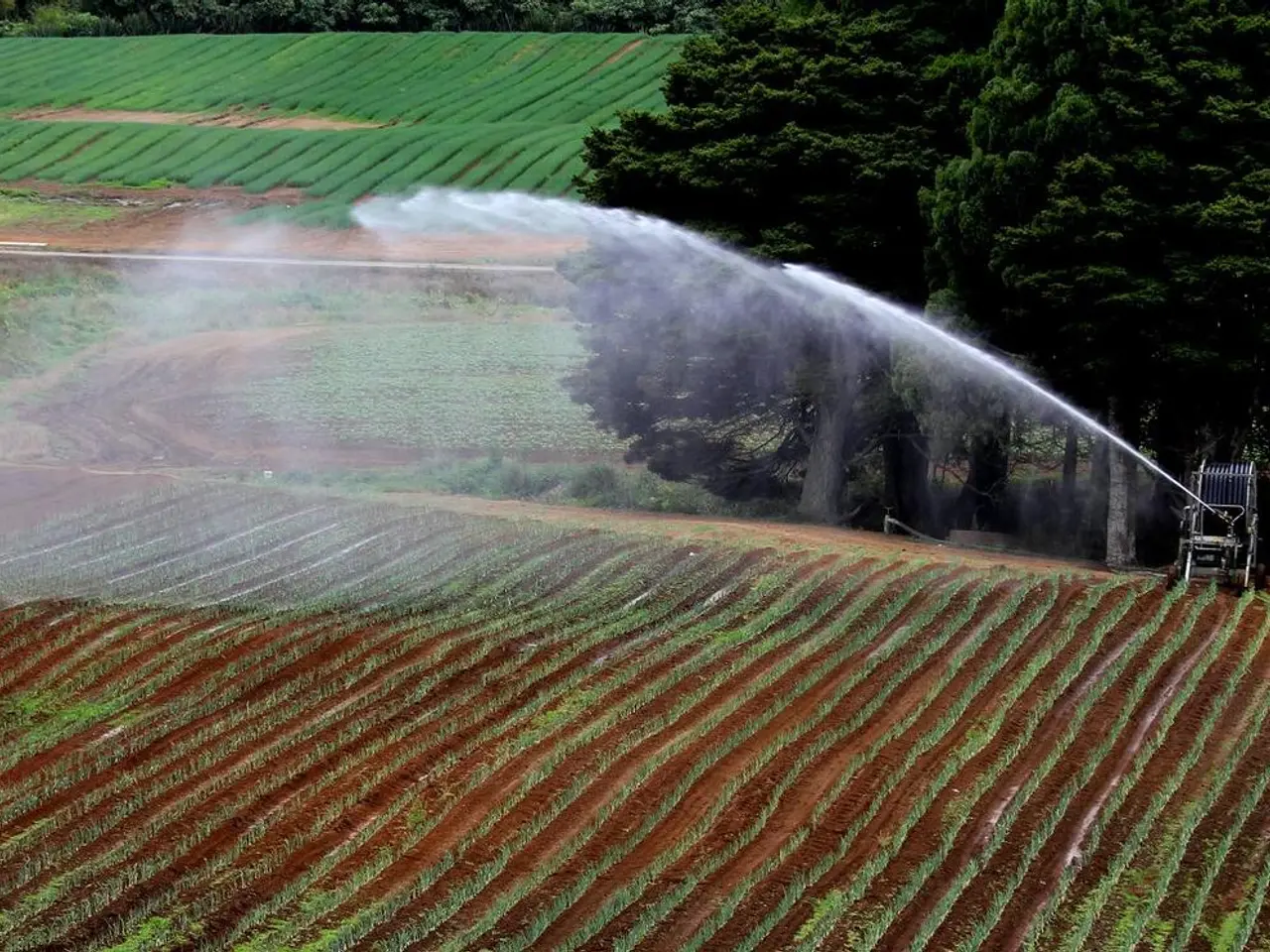Modern Methods and Green Approaches for Tractor-Based Agriculture Today
In the world of modern agriculture, sustainable farming practices are becoming increasingly important. One area that is seeing significant innovation is sustainable tractor farming techniques. These methods work together to reduce inputs, protect soil, and stabilize yields.
Farmers are adopting a variety of strategies to achieve this goal. For instance, the use of GPS mapping to plan field passes and till depth is becoming commonplace. This allows farmers to protect soil structure by scheduling heavy work when the soil is drier, using shallow, targeted tilling, setting till depth by soil zone, and marking zones to avoid after rain and setting GPS lines for Controlled Traffic Farming (CTF) lanes.
Maintenance is another crucial aspect of sustainable tractor farming. A well-maintained tractor not only ensures efficiency but also reduces the carbon footprint. The maintenance cadence includes oil and filter changes every 50 hours, inspecting tires and implement bearings every 100 hours, and reevaluating implement choice each season.
Innovative sustainable tractor field technology, such as autonomous electric tractors and renewable energies, is primarily used by progressive agricultural companies, research institutions, and eco-friendly farms in Germany. These farms are committed to reducing carbon emissions and enhancing efficiency.
To track energy use, farmers are turning to telematics and Internet of Things (IoT) tools. They maintain fuel-efficient engines and lighter implements by keeping engines tuned and filters clean, monitoring fuel consumption, downsizing tractors, choosing lighter implements, and balancing RPM and gear.
When it comes to choosing the right equipment, wide tires or tracks, CTF, no-till or reduced-till implements, implements with floating frames or suspension, and low safe tire pressure are all chosen to reduce compaction and support regeneration.
Implementing these innovations is an incremental process: measure, test, adjust, and scale. Practical steps include prioritizing field needs, matching machinery to priorities, running a trial pass and checking compaction with a penetrometer.
Farmers are also tracking specific metrics to monitor the effectiveness of these techniques. These include kWh per acre, charging time, idle energy use, State of Charge (SoC) trends, and equipment runtime and cycle count (battery wear). Alerts such as low battery warnings, high idle drain alerts, and abnormal charging session alerts are used to take immediate action.
Actions taken include shifting tasks to low-cost energy windows, replacing attachments that drag power, and adjusting routes to save battery. The ultimate goal is to reduce soil compaction and add regenerative machinery to the farm.
In conclusion, sustainable tractor farming techniques are proving to be a game-changer in the agriculture industry. By reducing inputs, protecting soil, and stabilizing yields, these methods are not only beneficial for the environment but also for the farmers' bottom line. As more farmers adopt these practices, we can expect to see a more sustainable and efficient agriculture industry in the future.
Read also:
- Soil Preservation Champions: The Unseen Power of Nonvascular Flora
- Naloxone dispensers installed at five train stations in Cook County Health and CTA initiative
- Transitioning to Environmental Profitability
- Maruti Suzuki bolsters growth trajectory through GST benefits, Victores launch, and safety improvements focus




